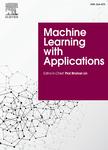版权所有:内蒙古大学图书馆 技术提供:维普资讯• 智图
内蒙古自治区呼和浩特市赛罕区大学西街235号 邮编: 010021

作者机构:Virginia Tech Dept Comp Sci Blacksburg VA USA Univ Nevada Dept Comp Sci & Engn Reno NV 89557 USA
出 版 物:《MACHINE LEARNING WITH APPLICATIONS》 (Mach. Learn. Appl.)
年 卷 期:2025年第19卷
核心收录:
基 金:National Institute of Food and Agriculture/USDA USA [2020-67021-30754]
主 题:Ensembles of classifiers One-class classification Multi-class classification Generative adversarial networks Auto-encoder Principal component analysis
摘 要:Traditional methods for multi-class classification (MCC) involve using a monolithic feature extractor and classifier trained on data from all the classes simultaneously. These methods are dependent on the number and types of classes and are therefore rigid against changes to the class structure. For instance, if the number of classes needs to be modified or new training data becomes available, retraining would be required for optimum classification performance. Moreover, these classifiers can become biased toward classes with a large data imbalance. An alternative, more attractive framework is to consider an ensemble of one-class classifiers (EOCC) where each one-class classifier (OCC) is trained with data from a single class only, without using any information from the other classes. Although this framework has not yet systematically matched or surpassed the performance of traditional MCC approaches, it deserves further investigation for several reasons. First, it provides amore flexible framework for handling changes in class structure compared to the traditional MCC approach. Second, it is less biased toward classes with large data imbalances compared to the multi-class classification approach. Finally, each OCC can be separately optimized depending on the characteristics of the class it represents. In this paper, we have performed extensive experiments to evaluate EOCC for MCC using traditional OCCs based on Principal Component Analysis (PCA) and Auto-encoders (AE) as well as newly proposed OCCs based on Generative Adversarial Networks (GANs). Moreover, we have compared the performance of EOCC with traditional multi-class DL classifiers including VGG-19, Resnet and EfficientNet. Two different datasets were used in our experiments: (i) a subset from the Plant Village dataset plant disease dataset with high variance in the number of classes and amount of data in each class, and (ii) an Alzheimer s disease dataset with low amounts of data and a large imbalance in d